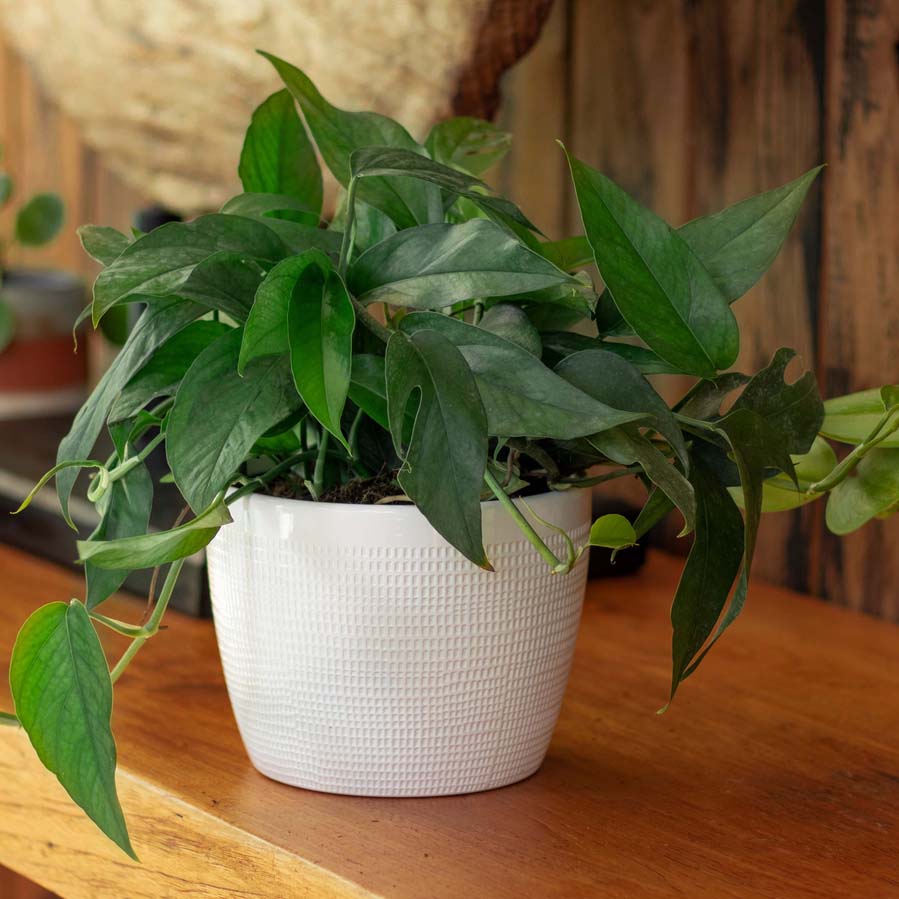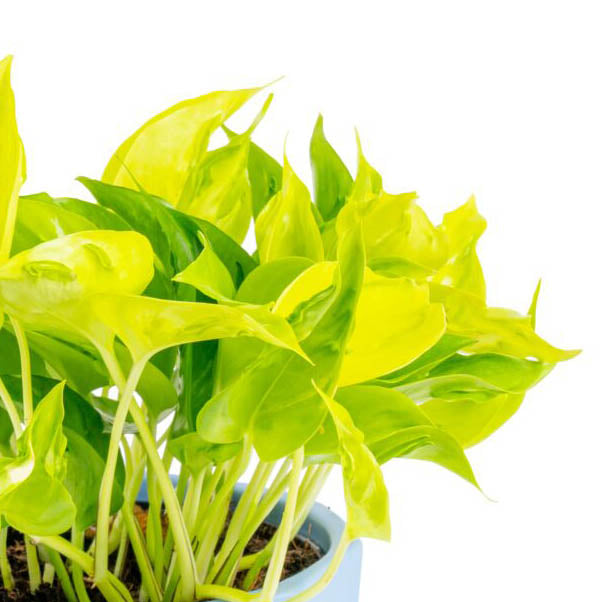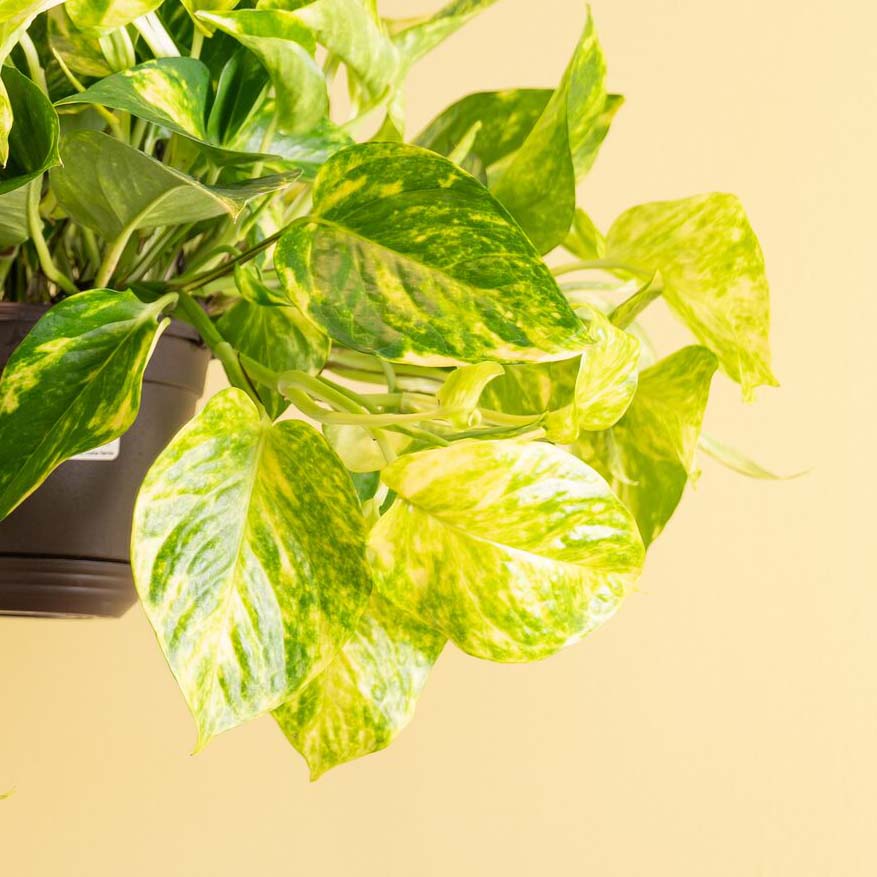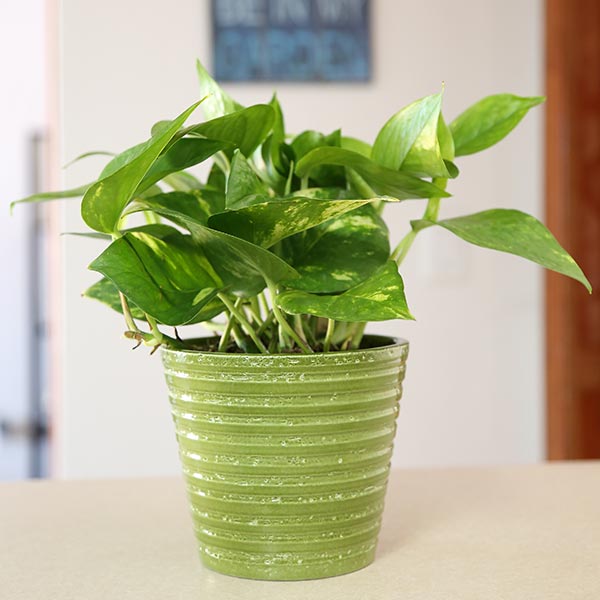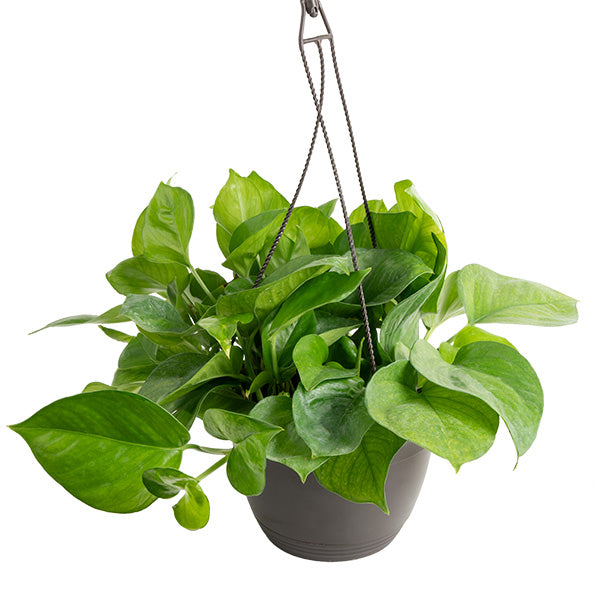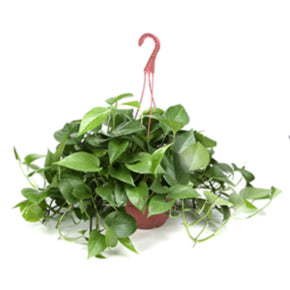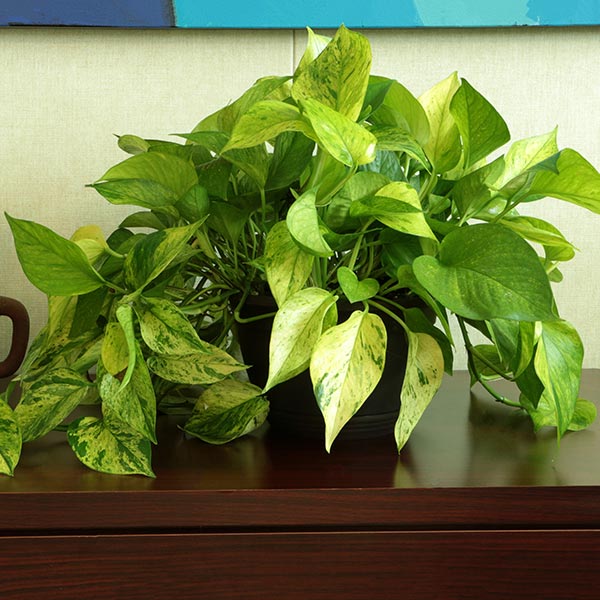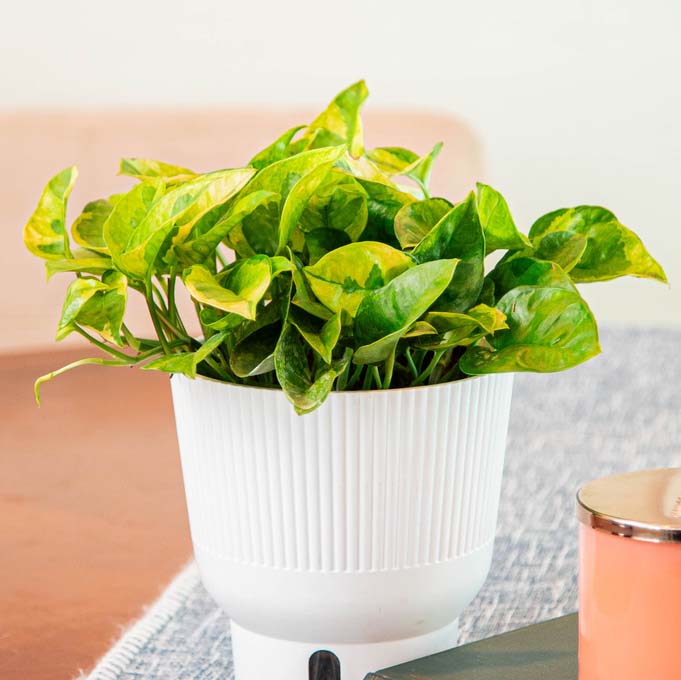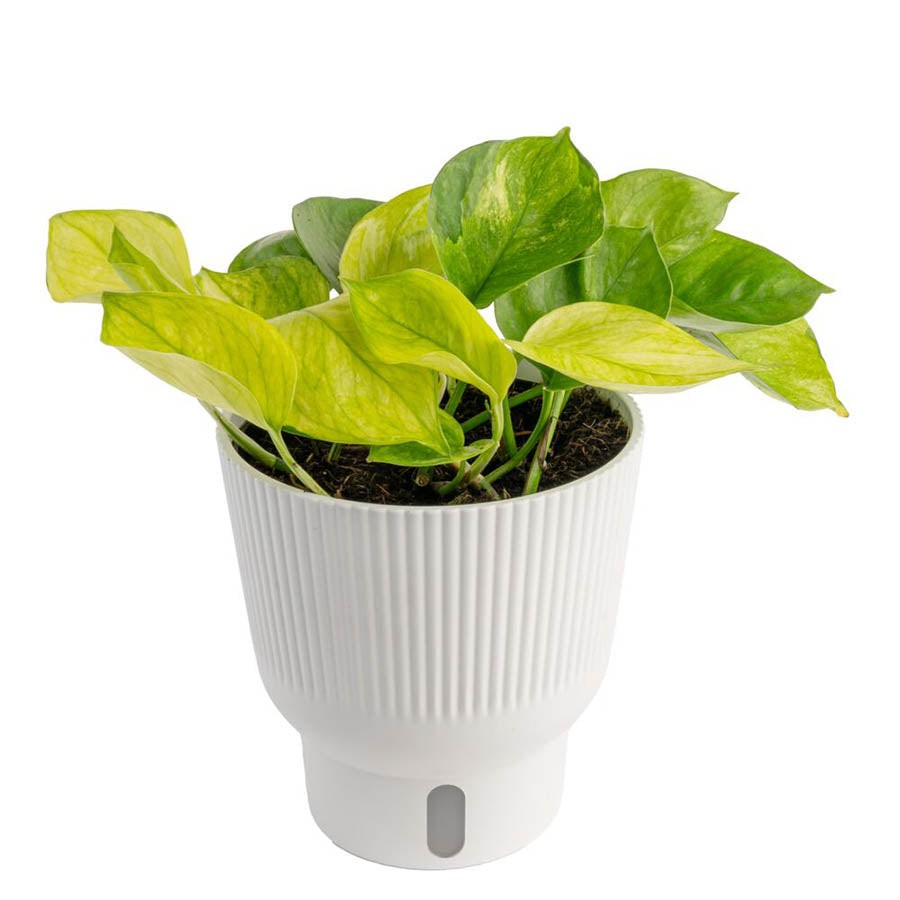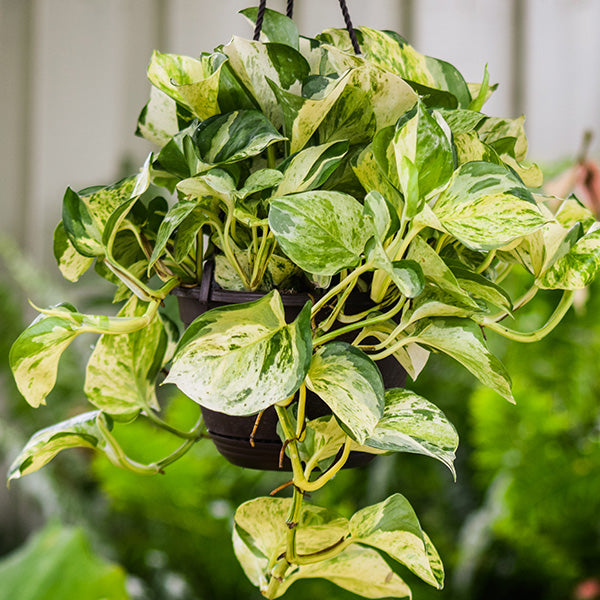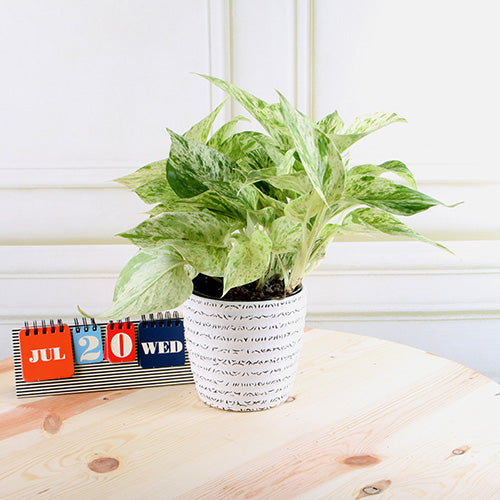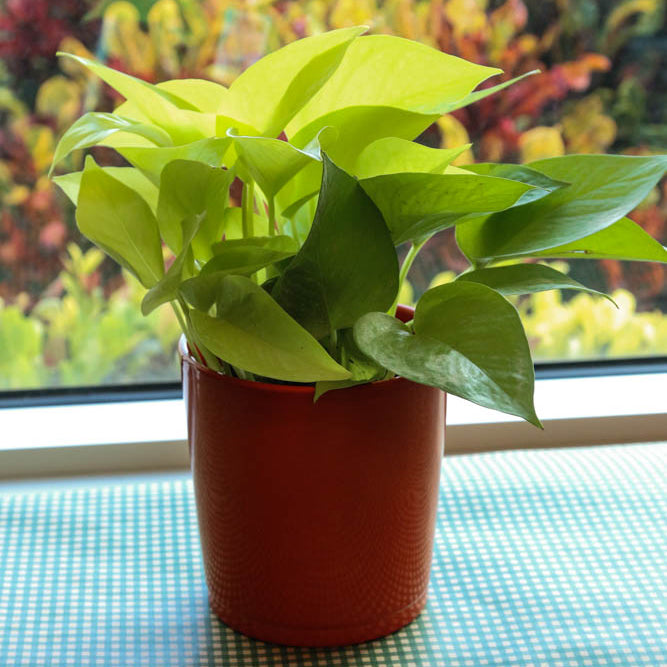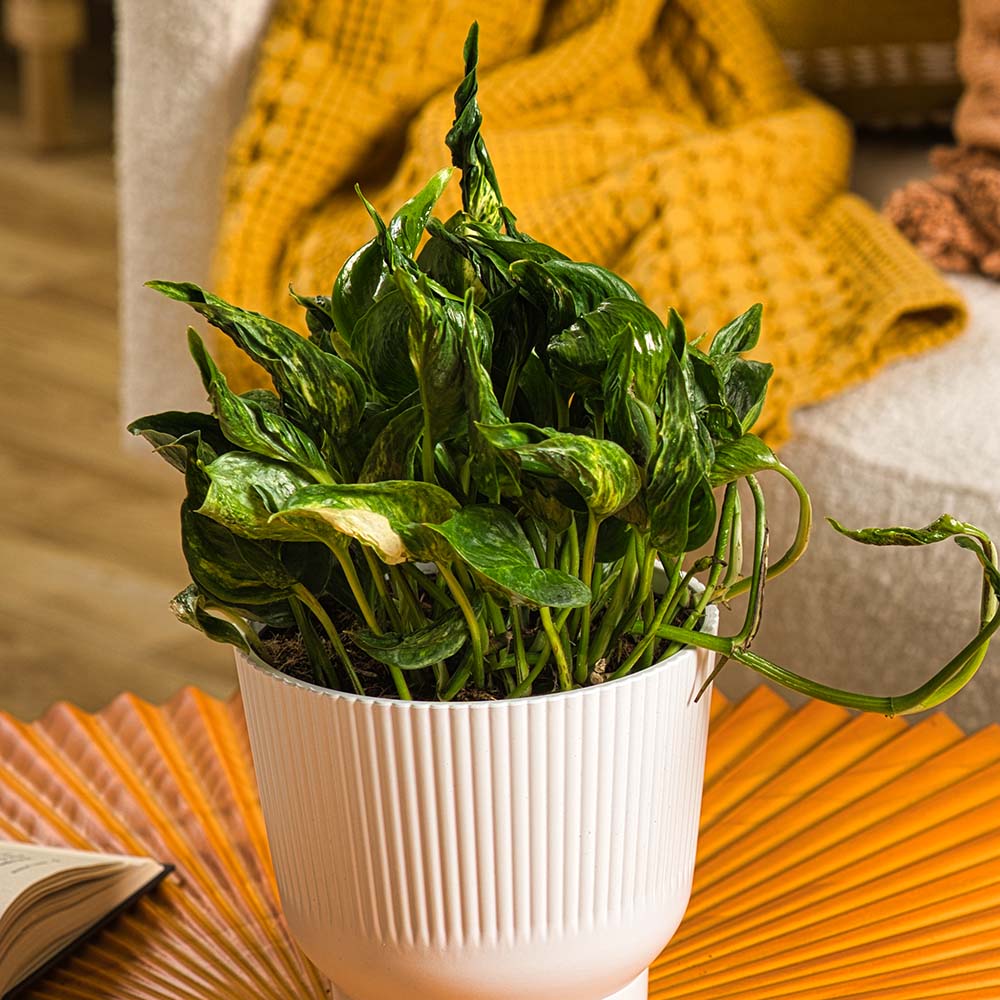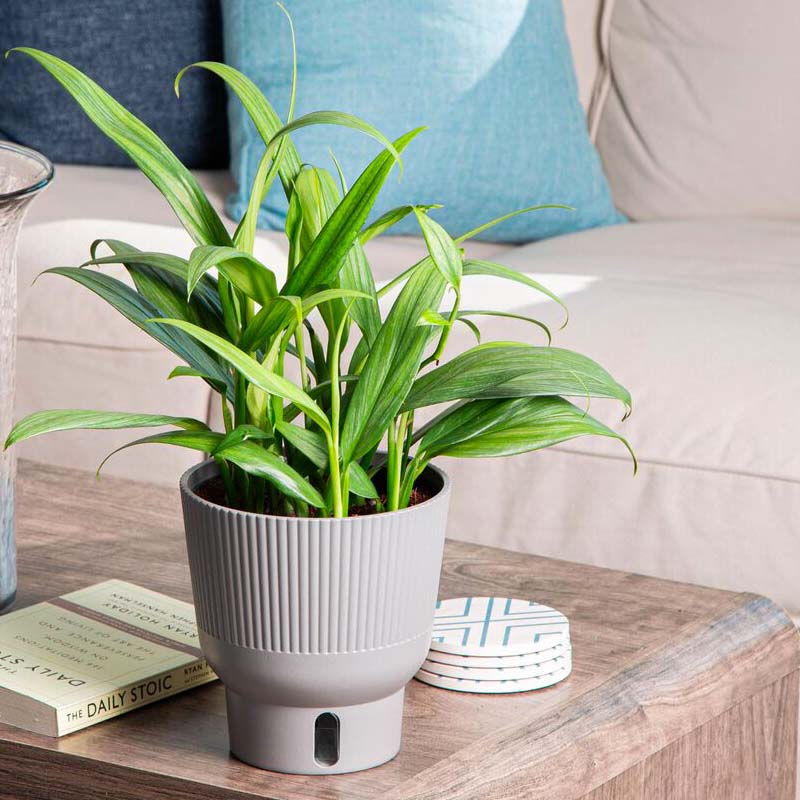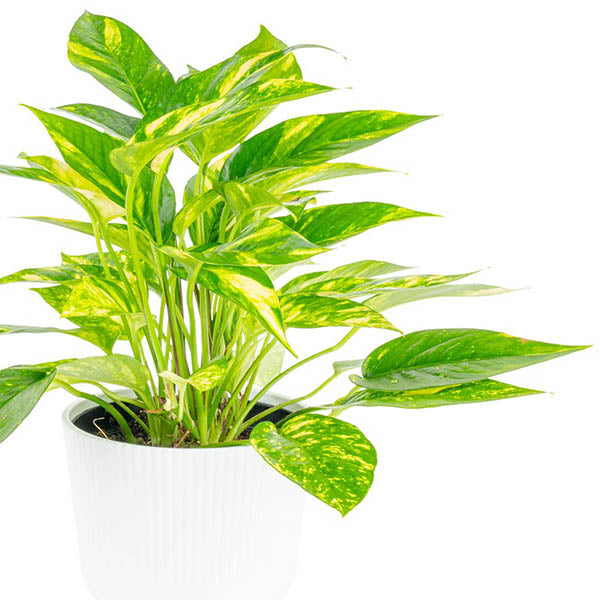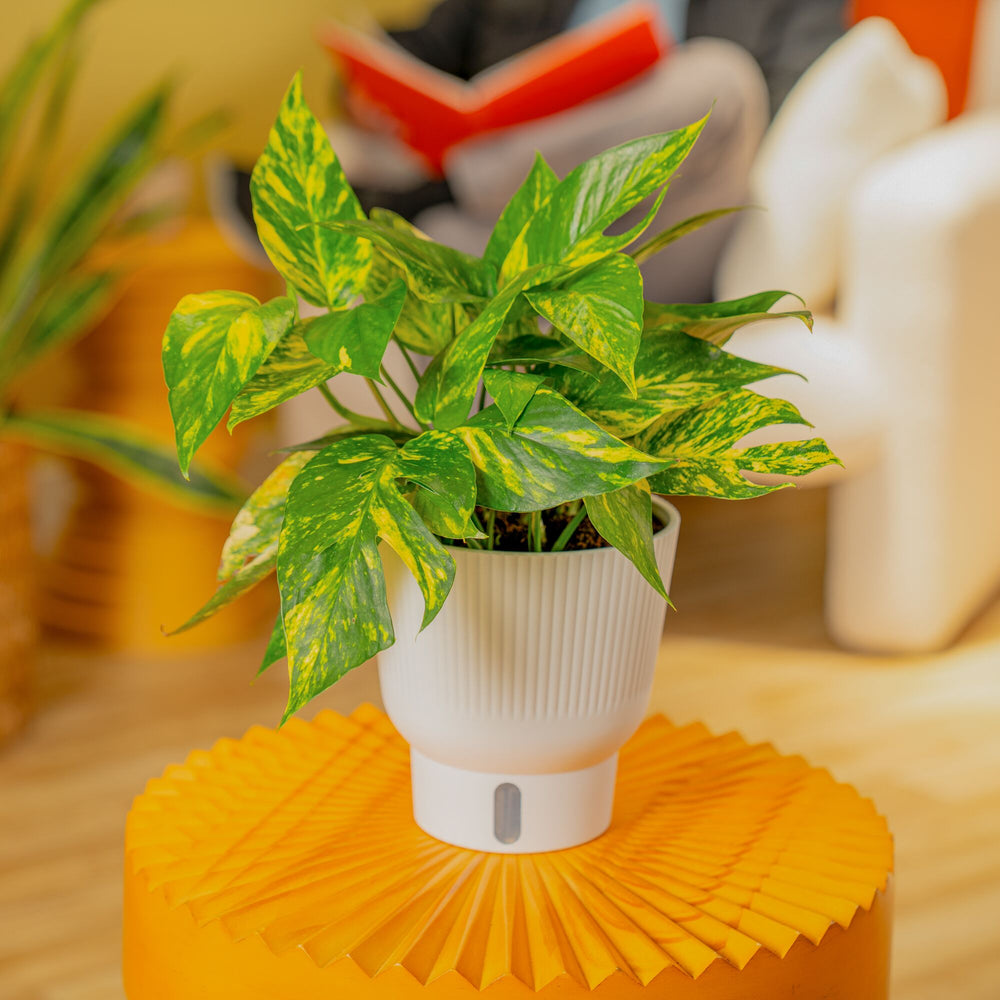Pothos (Epipremnum aureum)
Pothos Plant Features
A perfect houseplant for beginners, pothos is one of the easiest you can grow -- and one of the most popular. For many people it's their first houseplant, and often remains their favorite. It's forgiving in its care needs, so you can enjoy it in virtually any room of your home or office, even those interiors that receive only artificial light. Pothos is practically effortless to display. You can grow it in hanging baskets to trail down, let it climb a totem or trellis, or grow horizontally along a tabletop or mantle.
The most common form, golden pothos, features dark green leaves splashed and marbled in shades of yellow, cream, or white. It's also one of the fastest-growing varieties. Newer selections (see them at the bottom of this page) show off different variegation patterns, from the green-on-green look of Global Green to the silvery sheen on Cebu Blue.
Pothos plants, as they grow and mature, develop larger leaves. While young, immature plants may feature leaves that grow only 3 or 4 inches long, the foliage can be come much larger. Encourage pothos plants to develop larger leaves by giving them bright light, warm temperatures, and letting them grow vertically. Note: Some varieties, including Baltic Blue and Cebu Blue, will develop dramatic cuts, called fenestrations, in the leaves. This makes them look similar to a monstera.
Note: Pothos is a common name for the plant. It's botanically known as Epipremnum, though throughout history, it's been reclassified as a Scindapsus, Rhaphidophora, and Pothos. (Botanically, Pothos species are distant cousins of the Epipremnum varieties we enjoy indoors.) But no matter what you call it, this plant is a delightful houseplant!
Our houseplant experts can help! Just drop us an email.
Buy Costa Farms PothosFind a variety of Costa Farms pothos in our online plant shop or at your favorite local garden center. Check out our retailer partners.
Pothos Growing Instructions
Pothos requires no special care indoors; it tolerates low light (but grows well in medium- and high-light spots, as well), low humidity, and the occasional missed watering. That said, pothos prefers moist (but not wet or saturated) soil, so it's best to water it when the top couple of inches or so of the potting mix is dry.Because it's such an easy-care houseplant, you don't need to worry about fertilizing pothos a lot. Feed it at least twice a year (every six months or so) with a general-purpose houseplant fertilizer (available from your local garden center). If you wish to fertilize the plant more frequently, you can certainly do so to encourage faster growth.
If your pothos grows longer than you'd like, or becomes too lanky, it's easy to trim. Just prune off several inches from the end of a stem. Doing so will encourage it to develop sideshoots, becoming more full and lush. You can prune pothos any time of the year without harming it. When pruning, avoid removing more than about one third of the total leaves at one time. Pruning too hard can cause stress to your pothos.
Looking for other low-water houseplants? Here are some of our top picks.
This easy-care houseplant is not intended for human or animal consumption. In some subtropical areas, it can be considered an invasive pest. Check local restrictions before growing it outdoors.
-
Water
Medium water needs
-
Light
Indoors: High light
Indoors: Low light
Indoors: Medium light
-
Colors
Green
Variegated
-
Special Features
Purifies the air
Super-easy to grow
Complement your Pothos
DieffenbachiaDieffenbachia and pothos are lovely complements to one another.
Arrowhead Plant
Arrowhead plant and pothos make a delightful climbing combo!
Ponytail Palm
Ponytail palm and pothos are perfect, easy-care houseplants to grow together.
Q&A
My 'Marble Queen' pothos started growing leaves that are all green instead of variegated. Is this normal?All variegated plants -- including 'Marble Queen' pothos -- have the ability to revert to their non-variegated forms. This is a natural occurrence that can happen at any time. Happily, it's nothing to worry about and easy to fix. Just prune out the reverted shoot on your pothos (that way it doesn't take over the entire plant). If you wish to plant it in another pot, you can grow it out or share it with a gardening friend.
I've been told pothos likes to be rootbound. How do I know when to repot it?
While pothos tolerates being rootbound, or having more than 75 percent of the volume of the pot filled with roots, it doesn't actually enjoy it. You'll find your pothos will grow faster and more happily if you repot as the roots begin to fill the container. When repotting, it's ideal to jump up one pot size at a time -- if you go from a small pot to a large pot, all the extra potting mix around the roots may hold moisture longer than your pothos prefers, causing roots to suffocate, die, and rot.



